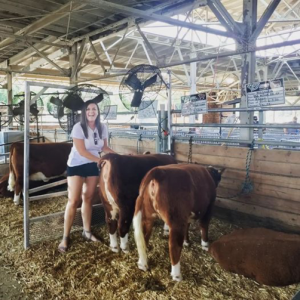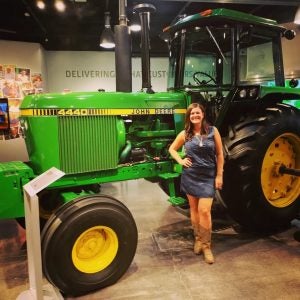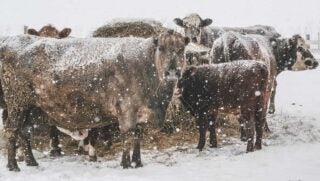The United States is made up of more than 3,000 counties, and 2,000 of them have a county fair. County and state fairs are incredibly important to getting the public to interact with different aspects of agriculture. Even in rural areas, not everyone is involved with agriculture, so these small moments of exposure really help people learn about the industries that feed them.
Livestock shows, exhibits, and auctions give a small glimpse into ranches across America, these are especially beneficial if they are coupled with ag education efforts. I recently visited the Iowa State Fair, and there they had a poultry exhibit demonstrating enriched housing for commercial egg layers. This exhibit in particular showed how commercial poultry operations were enacting stronger animal welfare initiatives without compromising productivity or profitability.
County fairs provide a unique opportunity to show what it is like in our commercial poultry, swine, and cattle operations to a mass amount of people, without having to open up our farms to the dangers or liability of public visitors.
Plus, some communities may not be local enough to visit a real working farm, so the small introduction they get to agriculture at the county fair may be their only interaction with ag … ever.
Some fairs, like Erie County, New York, or the Texas State Fair, draw over 1 million visitors each year! That is a huge potential audience for ag education!

Livestock aren’t the only thing we can educate the public on at county fairs. Food stalls selling locally produced favorites, like the abundance of different types of corn products made at the Iowa State Fair, help show off the agriculture of the area.
It’s important that the public know what types of foods are grown in their area, and what to do with them so they can purchase local products and cook them. These food opportunities are not just a way for fairs to make money, but also a chance to exhibit the local agriculture. Some fairs even have specific exhibits about the crops grown in their areas, and these are especially great ways to educate about agriculture.
Yet, fairs aren’t the only way we can teach people about agriculture. Farm shows, museums, and agriculture-related tourist attractions also help educate the public on farming and ranching. Even museums like the John Deere Tractor Museum are immersing visitors in current and historical agriculture. It is vital that we continue to show off the amazing work that agriculture is doing in a light-hearted, and interesting way. Visitors to these attractions aren’t exactly there to be educated on agriculture, but their captive attention gives us the ability to teach them in subtle ways.

Keep supporting your local fairs and agriculture education attractions/exhibits. These opportunities for the public to engage with agriculture help solidify their trust and confidence in the American farmer and rancher.
In today’s day and age, we need all the help we can get to support agriculture. It also helps engage the urban population and “foodies” with popular trends in food, farming and beyond.
Michelle Miller, the Farm Babe, is a farmer, public speaker and writer who has worked for years with row crops, beef cattle, and sheep. She believes education is key in bridging the gap between farmers and consumers.



